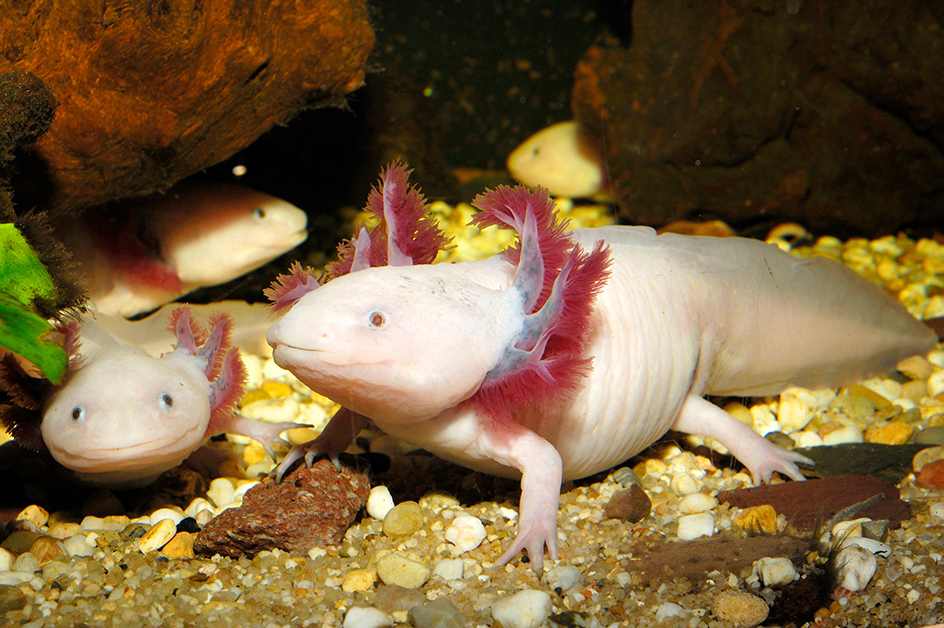Axolotl, << AK suh LOT uhl, >> is an unusual Mexican salamander. The adult axolotl has external gills and a large tail fin. These characteristics are common to salamander larvae (young), which live in the water. Most adult salamanders lose these features when they begin to live on land. Adult axolotls, however, continue to live in the water. The axolotl is an example of pedomorphism << PEE doh MAWR fihz uhm >> , the retention of juvenile characteristics by an adult.

Axolotls are large compared with most salamanders. Axolotls can reach 12 inches (30 centimeters) long. Wild axolotls are typically dark greenish brown, with small black spots or blotches. The external gills have a feathery appearance and may be red or pink. The gills extend out into the water from behind the head.

The axolotl is native to the shallow lakes and water channels of Mexico City. This area was once the site of Tenochtitlan, the capital of the Aztec Empire. The name axolotl refers to the Aztec god Xolotl. The name means water dog.
Scientists use the axolotl in much research. They have studied its ability to regrow limbs. The axolotl has been especially useful for understanding how animals develop. It is easy to breed and maintain in captivity. The axolotl is also a popular pet.
The axolotl is nearly extinct in the wild. The expansion of Mexico City has damaged or destroyed most of the areas where axolotls live. Other threats include water pollution, invasive fish species, and harvesting for food and medicine by people.
